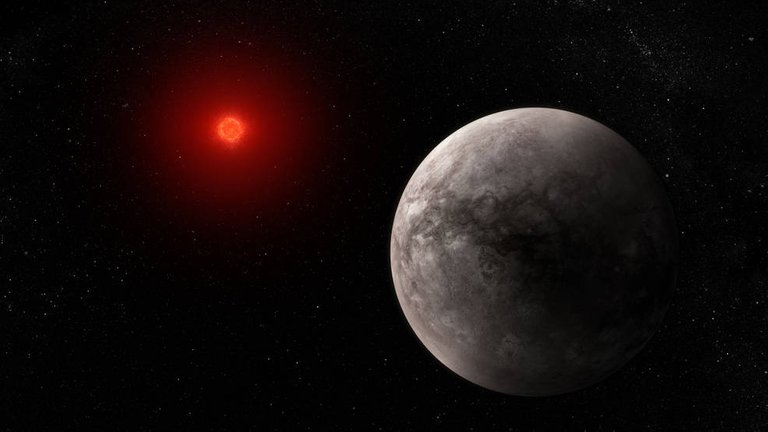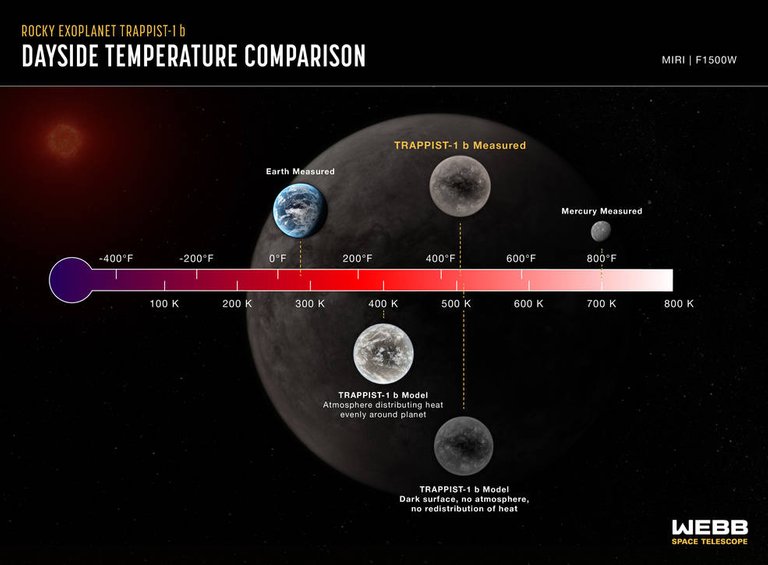The TRAPPIST-1 system
The TRAPPIST-1 system

Souce
The James Webb Space Telescope has examined the temperature of a rocky exoplanet that is slightly larger than Earth and has about the same density as our planet.

Souce
The year in TRAPPIST-1b lasts only one and a half terrestrial days, this proximity means that the planet always has a face facing the star where it is always day, the same thing that happens to our beloved moon, which always shows us the same face.
Thank you for visiting my blog. If you like posts about #science, #planet, #politics, #rights #crypto, #traveling and discovering secrets and beauties of the #universe, feel free to Follow me as these are the topics I write about the most. Have a wonderful day and stay on this great platform :) :)
! The truth will set us free and science is the one that is closest to the truth!
0
0
0.000
Thanks for your contribution to the STEMsocial community. Feel free to join us on discord to get to know the rest of us!
Please consider delegating to the @stemsocial account (85% of the curation rewards are returned).
You may also include @stemsocial as a beneficiary of the rewards of this post to get a stronger support.